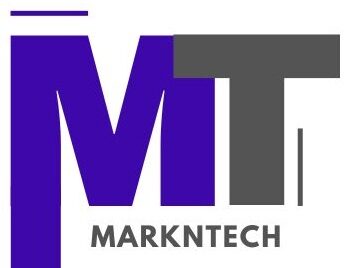Are you a virtual Sales Development Representative (SDR) wanting to boost your LinkedIn skills? This guide will show you how to use LinkedIn to find great leads and grow your sales. We’ll cover strategies and tactics to help you succeed.
As a virtual SDR, you have special challenges. But LinkedIn can be your key to success. We’ll teach you how to make a strong profile, use advanced search, and reach out in a personal way. This will help you shine in social selling and lead generation.
Are you ready to make the most of LinkedIn and become a prospecting expert? Let’s start and learn the strategies to boost your virtual SDR work. This will help your business grow.
Key Takeaways
- Optimizing your LinkedIn profile for maximum visibility and credibility
- Defining your Ideal Customer Profile (ICP) to target the right prospects
- Leveraging LinkedIn’s advanced search features to find and connect with decision-makers
- Crafting personalized outreach messages that capture attention and build rapport
- Utilizing LinkedIn Sales Navigator to streamline your prospecting efforts
- Engaging with prospects’ content to establish thought leadership and trust
- Conducting effective initial qualification calls to identify quality leads
Introduction
LinkedIn is key for virtual sales development representatives (SDRs) to excel in prospecting and social selling. It lets SDRs show off their skills, connect with important people, and talk to their audience in a real way. We’ll look at why LinkedIn is important for finding prospects and how virtual SDRs can use it to succeed.
Importance of LinkedIn for Prospecting
In today’s online world, 80% of customer journeys start online. LinkedIn is a top platform for B2B prospecting. Sales teams that use social selling on LinkedIn are 45% more likely to hit their goals and find 45% more chances for success. LinkedIn is 277% better at making leads than other social media sites, says HubSpot.
With 80% of B2B leads coming from social media, LinkedIn is a must-know for virtual SDRs. They need to get good at using LinkedIn to stay competitive.
Overview of Prospecting Strategies
To do well on LinkedIn, SDRs need a smart plan. They can use different ways to find, connect with, and talk to their prospects. The “10x3x1” method means sending 10 targeted invites, commenting on 3 posts, and posting once a day to help prospecting.
It’s also smart to make connection requests personal since people get many invites. LinkedIn likes text posts for reaching people naturally. This is great for SDRs to share their knowledge and connect with potential clients.
Understanding LinkedIn’s role in prospecting and using various strategies can open up many opportunities for virtual SDRs. The rest of this article will go deeper into tactics and best practices for using LinkedIn for lead generation and sales growth.
1. Setting Up a Professional LinkedIn Profile
Creating a strong LinkedIn profile is key for finding new customers. It’s like your digital business card. It shows off your skills and makes you look credible to potential customers. Make sure to highlight your best qualities and what you’re good at.
Optimizing Your Profile Picture and Headline
Your profile picture is what people see first on LinkedIn. Choose a professional photo that shows who you are. Then, write a headline that clearly states what you do and what you’re an expert in.
Crafting a Compelling Summary
Your LinkedIn summary is your chance to stand out. Write a short, interesting summary that tells people about you. Talk about your skills and how you can help others.
Highlighting Relevant Experience and Skills
Make sure your LinkedIn shows off your work history and skills. Talk about your jobs and the skills you have that match what you’re looking for. This makes you more visible to people who might want to connect with you.
By making your LinkedIn profile strong, you’re setting up a good base for finding new customers. A professional profile helps you look good, builds trust, and connects you with the right people. Think of your LinkedIn profile as your online business card.
SDRThoughts: The Role of LinkedInin the SDR7 DIY Tips for SDRsto Build an Effective LinkedIn ContentHow SDRs Can Build MorePipeline Using

2. Defining Your Ideal Customer Profile (ICP)
Before you start your LinkedIn prospecting, define your Ideal Customer Profile (ICP) and make detailed buyer personas. Know what your target customers are like. This way, you can make messages that speak to them and meet their needs.
Identifying Key Characteristics of Your ICP
Start by looking at your customers by their revenue, how long they stay with you, and if they refer others. This helps you find the top 20% who are most valuable and have the most growth potential. Then, think about things like their industry, size, where they are, how much they make, and how many people work there. Also, consider their pain points, goals, challenges, values, and company culture.
Creating Detailed Buyer Personas
Use what you learn from segmenting your customers to make detailed buyer personas. Include things like their name, role, what they do, their goals, challenges, likes, and what drives them. Check these ideas by talking to prospects who fit your ICP and personas through email, phone, and social media. Keep making your ICP better based on what prospects say, breaking it down into smaller groups for better targeting.
Aligning Your Messaging with ICP Needs
With a good idea of your ICP and buyer personas, you can tailor your messages to their needs. This makes your outreach messages more effective and likely to get a good response. Keep your ICP fresh by using feedback, market research, looking at competitors, and following industry trends. This keeps your messages relevant and in line with your business goals.
| Key ICP Attributes | Example Data |
|---|---|
| Revenue | $1M – $100M |
| Number of Employees | 100 – 5,000 |
| Industry | SaaS, Software, Technology |
| Growth Stage | Fast-growing, well-funded startups and mid-market companies |
| Buyer Personas | CXO, VP, Director of Sales, Marketing, IT |
By defining your ideal customer profile and buyer personas, you’re ready to make messages that hit the mark with your audience. This sets the stage for successful LinkedIn prospecting.
3. Utilizing LinkedIn’s Advanced Search Features
As a virtual SDR, LinkedIn’s advanced search is key. It helps you find the right people in your target companies. Use the filters and search tools to focus on decision-makers and influencers.
Using Filters for Targeted Prospect Searches
LinkedIn lets you narrow down your search with many filters. You can look for job titles, locations, industries, and more. This way, you find the perfect prospects that match your Ideal Customer Profile (ICP).
This targeted search saves you time by focusing on the right people. It cuts down on time spent on leads that aren’t a good fit.
Saving and Organizing Search Results
Save your searches on LinkedIn to make your work easier. This lets you go back and improve your lists over time. Also, making custom lead lists helps you keep track of your outreach and see your progress.
Finding Decision-Makers and Influencers
LinkedIn’s advanced search is great for finding important people in companies. Use filters like job title and seniority to find those who can make decisions. This way, you’re more likely to get meetings and close deals.
LinkedIn Advanced Search,Targeted Searches,Search Filters, Search Results, Decision-Makers, Influencers
“LinkedIn’s advanced search features have been a game-changer for my prospecting efforts. By leveraging the various filters and saved searches, I’m able to quickly identify the right decision-makers and influencers within my target accounts.”
Mastering LinkedIn’s advanced search helps you find the best prospects for your business. Keep improving your search methods, save your best searches, and stay organized. This will boost the success of your outreach efforts.
4. Crafting Personalized Outreach Messages
Successful LinkedIn prospecting means making outreach messages that grab your prospects’ attention. Use their name and details from their profile to connect personally. Showing common connections or shared interests can also help build a bond.
Using the Recipient’s Name and Details
Personalization is key on LinkedIn. Use the recipient’s name and their profile details to make your message feel special. This makes your message stand out from generic ones.
Highlighting Common Connections or Interests
Sharing common connections or interests with prospects can build a connection. It shows you know about their background and what matters to them. Mentioning these in your messages can make you more noticeable and valuable.
Keeping Messages Clear and Concise
On LinkedIn, keep your messages short and to the point. Make them clear and focused on how you can help the prospect. Aim for messages that are five to seven sentences long. This way, you get your main points across without overwhelming them.
| Personalized Outreach Strategies | Benefits |
|---|---|
| Using the Recipient’s Name and Details | Forges a personal connection and makes your message stand out |
| Highlighting Common Connections or Interests | Establishes rapport and demonstrates your understanding of the prospect |
| Keeping Messages Clear and Concise | Ensures your key points are conveyed without overwhelming the recipient |
Using these strategies in your LinkedIn outreach can help you make messages that grab your prospects’ attention. This can lead to successful connections and conversations.

“Carefully crafted personalized messages can achieve open rates of 40%, but when messages lack relevance, the open rates drop to 10%, indicating a significant impact on engagement.”
5. Leveraging LinkedIn Sales Navigator
As virtual SDRs, LinkedIn Sales Navigator is a key tool for us. It has many features that boost our prospecting. Using Sales Navigator, we can work more efficiently and effectively.
Key Features of Sales Navigator
LinkedIn Sales Navigator has many features to help us prospect better. Some key ones are:
- Targeted search filters let us focus on specific prospects by location, industry, job title, and more.
- Lead recommendations suggest potential prospects that match our search and past interactions.
- Detailed account insights give us a full view of our target companies, including news and key people.
Creating and Managing Lead Lists
Creating and managing lead lists is a big plus of Sales Navigator. We can use advanced search filters to make lists of prospects that fit our ideal customer profile (ICP). This keeps us organized and ensures our outreach is spot-on.
| Feature | Benefit |
|---|---|
| Advanced Search Filters | Narrow down prospects by location, industry, job title, and more. |
| Lead Recommendations | Receive personalized suggestions for potential prospects. |
| Account Insights | Gain in-depth understanding of target companies and decision-makers. |
Using Alerts and Insights for Timely Outreach
LinkedIn Sales Navigator also lets us set up alerts for prospect activities. By alerting us to job changes or company updates, we can reach out at the perfect time. This helps us stay ahead and boost our outreach success.
“LinkedIn’s search filters make it one of the most powerful tools for salespeople.” – Anna Crowe, Leadfeeder
By using LinkedIn Sales Navigator, virtual SDRs can make prospecting easier, build focused lead lists, and connect with prospects at the best time. This tool is a big help in getting more qualified leads and closing deals.
6. Engaging with Prospects’ Content
In the world of virtual sales development, connecting with prospects is key. Engaging with their content on LinkedIn is a strong strategy. By commenting and sharing their posts, you stay in their mind and show you care. This helps build valuable relationships and makes you a trusted resource.
Commenting and Sharing Their Posts
Take time to thoughtfully comment on your prospects’ LinkedIn posts. Offer insights, ask questions, or share industry knowledge. Your goal is to add value and show you understand their needs. Also, sharing their posts with your network boosts their visibility and strengthens your bond.
Sending Thoughtful Messages About Their Content
Don’t just comment and share. Send personalized messages about their posts too. Praise a post that stood out and share what you learned. Showing you care about their work builds rapport and makes you a valuable peer.
Building Rapport Through Consistent Engagement
Being consistent in engaging with prospects is key to lasting relationships. Always check their posts, comment, and share. Over time, you’ll become a trusted face in their network. This opens doors for deeper conversations and business chances.
Using LinkedIn to engage with content helps you grow relationships with prospects. It makes you a thought leader and boosts sales. Remember, be genuine and aim to add value, not just make a sale.
LinkedIn Prospecting,Sales Prospecting Strategies,Sales Prospecting Plan

| Key Metrics | Average Performance | Benchmark |
|---|---|---|
| Prospect Engagement Rate | 48% | 60% |
| Time to Follow Up on New Lead | 42 hours | 24 hours |
| Lead Response Rate | 62% | 80% |
| Personalization Technology Investment | 52% | 70% |
“Engaging with your prospects’ content on LinkedIn is an essential strategy for building meaningful relationships and establishing yourself as a valuable industry resource.”
7. Using InMail for Direct Outreach
LinkedIn’s InMail lets virtual SDRs reach out directly to their targets. By writing great InMail, you can catch your prospect’s eye. You can share your value and make them want to reply. Also, knowing how to follow up and track your InMail can make your outreach better over time.
Crafting Effective InMail Messages
When sending InMail, make sure your messages are personal and hit the mark with your ideal customer. Use what you know about your prospects, like their job or interests. This makes you different from the many generic InMails they get.
Best Practices for Follow-Up Messages
- Send a follow-up within 1-2 days of your first InMail to keep things moving.
- Change up your messages in each follow-up to answer any questions or concerns.
- Be friendly and show you’re really interested to build a connection.
- Share useful info or resources that could help your prospect, not just sales talk.
Tracking Message Performance and Adjusting Strategies
Keep an eye on how your InMail campaigns are doing to see what’s working. Look at open rates, reply rates, and conversion rates. Try different subject lines and messages to see what gets the best results.
| Metric | Benchmark | Your Performance |
|---|---|---|
| InMail Open Rate | 10-25% | 15% |
| InMail Reply Rate | 5-20% | 12% |
| Conversion Rate (InMail to Connection) | 5-10% | 8% |
By looking at your data and tweaking your inmail outreach, inmail messages, follow-up messages, and strategy adjustments, you can make your LinkedIn outreach better. This leads to better results over time.

“90% of consumers use social media for business, and 92% are hesitant to buy without seeing others do it first.”
8. Conducting Initial Qualification Calls
After connecting with a prospect on LinkedIn, it’s time for an initial qualification call. This call checks if the prospect fits your solution and is ready to move ahead. Being well-prepared is crucial for this step.
Preparing for the Call
Before the call, do your homework on the prospect and their company. Know their background, what they do, and any challenges they face. This helps you ask better questions and connect with their needs.
Make a list of qualifying questions to see if the prospect fits and is interested. These should cover important topics like budget, decision-making power, timeline, and their specific problems or needs.
Asking Relevant Qualifying Questions
- What are the primary challenges your team is currently facing?
- What are your key business objectives for the next 6-12 months?
- Who would be the key decision-makers involved in evaluating a solution like ours?
- What is your timeline for implementing a new solution?
- What is your current budget for a solution like ours?
Assessing Fit and Interest Quickly
Listen to what the prospect says and watch how engaged they are during the call. This tells you if they’re a good fit for your solution and if they’re really interested.
If they meet your criteria and show real interest, move on to the next steps. This could be a deeper call or a product demo. But if they don’t seem right, it’s okay to end the call. You might find they’re better suited for another product.

“The key to successful initial qualification calls is to ask the right questions, listen closely, and quickly determine if the prospect is a good fit. This sets the stage for a more productive sales process down the line.”
9. Analyzing and Optimizing Prospecting Efforts
It’s key to check your LinkedIn prospecting often. This helps you find ways to get better and make smart choices. Look at important numbers like how many people see your profile, how many ask to connect, and how they react to your messages.
Tracking Key Metrics
Watch your profile views, how many connection requests you send, and how people engage with your messages. These numbers tell you what your audience likes and what you can do better. Look for trends to see what to focus on next.
Conducting A/B Testing
Use A/B testing to make your prospecting better. Try different things like changing your message’s start or what you ask for. See which ones work best and use that to improve your messages for your ideal customer.
Continuous Improvement
Don’t just look once and stop. Keep checking your data and what people say, and use that to get better. Change how you target people, what you say, and how you reach out based on what works. By thinking with data, you can always make your LinkedIn prospecting better and find more good leads.
| Metric | Description | Benchmark |
|---|---|---|
| Profile Views | The number of times your LinkedIn profile has been viewed by other users. | 100-300 views per month for an active user |
| Connection Requests Sent | The number of connection requests you’ve sent to potential leads. | 50-100 requests per month for an active prospector |
| Engagement Rate | The percentage of your outreach messages that receive likes, comments, or shares. | 10-20% engagement rate for personalized messages |
By watching these important numbers, testing different things, and always getting better, you’ll improve your LinkedIn and connect with the right customers.
Enhancing Sales Prospecting with LeadScoring and Large Language9 Ways to Improve SDR Productivity9 Must-Have Tools to HelpYou Amp Up Your Sales Prospecting
10. Building and Maintaining Your Network
As a virtual sales development representative (SDR), it’s key to build and keep a strong LinkedIn network. This is vital for finding new leads and keeping them interested. By sending connection requests to the right people and staying in touch, you open doors to more chances and referrals.
Sending Connection Requests to Qualified Leads
Start by finding and connecting with your ideal customer profile (ICP) on LinkedIn. Use LinkedIn’s search tools to find key people in your field. Make your connection requests personal by mentioning shared interests or mutual contacts. Studies show that personalized connection requests work better, helping you start strong relationships.
Engaging with New Connections Regularly
It’s not just about making the first connection. Keep up with your new contacts by commenting on their posts, sharing things they might like, and talking about your industry. Talking to industry leaders and decision-makers can really help your outreach and make you a go-to person.
Maintaining Relationships for Future Opportunities
Long-term relationships are the real strength of a LinkedIn network. Keep your connections by offering value, like useful tips, introductions, or just staying in touch. This can lead to more referrals, partnerships, and sales success. Social selling on LinkedIn is about real connections, not just quick sales.
By carefully building and keeping your LinkedIn network, you’ll find many chances to grow your sales. You’ll become a trusted partner to your customers.
Conclusion
In this guide, we looked at how virtual SDRs can do great at LinkedIn prospecting. We talked about making a professional profile and finding your Ideal Customer Profile (ICP). We also covered using advanced search, making personalized outreach, and keeping your network strong.
Recap of Prospecting Strategies
We went over important steps like making your LinkedIn profile better. We also talked about finding your target audience and using Sales Navigator’s tools. Plus, we looked at engaging with prospects and doing qualification calls well. These steps help you be a trusted advisor and make strong connections with your target accounts.
Encouragement to Implement These Tips
It’s time to try out these LinkedIn prospecting tips. Keep growing, always make your approach better, and watch your progress. Remember, being consistent and dedicated is important for lasting success.
Final Thoughts on Effective LinkedIn Prospecting
As virtual sales change, knowing how to prospect on LinkedIn is key for SDRs to do well. By using the tips and best practices from this guide, you can stay ahead and find new ways to connect with your ideal customers. Effective LinkedIn prospecting is a key strategy that can change your sales and help your business grow over time.
FAQ
What is a Sales Development Representative (SDR)?
An SDR is someone who looks for new customers, checks if they’re a good fit, and moves them through the sales process. They work with account executives (AEs) who take care of current customers and close deals. The SDR’s job is to find and prepare leads for AEs to close.
Why is LinkedIn essential for virtual SDRs?
LinkedIn is key for finding new customers and growing a network, especially for virtual SDRs. It lets professionals show off their skills, connect with key people, and talk to their audience. LinkedIn helps virtual SDRs do well at finding new customers, selling online, and building a strong network.
How can virtual SDRs create a professional LinkedIn profile?
Making a professional LinkedIn profile is the first step in finding new customers. Make sure your profile picture and headline make a good first impression. Write a summary that shows off your skills and experience. This makes you stand out and builds trust with potential customers.
Why is defining an Ideal Customer Profile (ICP) important for virtual SDRs?
Knowing your Ideal Customer Profile (ICP) is key before you start looking for customers. Find out what your ideal customers do, where they work, and what problems they face. This helps you send messages that really speak to them and meet their needs.
How can virtual SDRs leverage LinkedIn’s advanced search features?
LinkedIn’s advanced search lets you find and connect with the right people. Use filters like job title, location, and industry to find the right people. Save your searches and organize the results to make finding prospects easier.
What are the best practices for crafting personalized outreach messages?
To get attention on LinkedIn, send messages that feel personal. Use the person’s name and details from their profile to connect. Talk about any shared connections or interests to build a bond. Keep your messages clear, short, and focused on how you can help the prospect.
How can virtual SDRs leverage LinkedIn Sales Navigator?
LinkedIn Sales Navigator is a powerful tool for finding new customers. It has features like advanced search, lead suggestions, and insights on companies. Use it to make targeted lists of leads and get alerts about your prospects’ activities. This helps you reach out at the right time.
Why is engaging with prospects’ content important?
Talking to your prospects on LinkedIn helps build relationships and shows you’re interested and knowledgeable. Always comment on and share their posts, and send thoughtful messages. This keeps you in their mind, helps you build relationships, and makes you a valuable resource in your industry.
How can virtual SDRs use LinkedIn InMail effectively?
LinkedIn InMail lets you directly reach out to prospects. Write messages that catch their eye, clearly share what you offer, and encourage them to reply. Have a plan for following up, and track how your InMail is doing to get better at finding customers.
What should virtual SDRs focus on during initial qualification calls?
After connecting with a prospect, have a call to qualify them further. Do your homework on the prospect and company, and have questions ready to see if they’re a good fit. Quickly decide if they’re interested in your solution and ready to move forward.
How can virtual SDRs analyze and optimize their LinkedIn prospecting efforts?
Check how your LinkedIn efforts are doing to see what works and what doesn’t. Look at metrics like profile views, connection requests, and engagement. Test different messages and methods, and adjust your approach based on what you learn.
Why is building and maintaining a strong LinkedIn network important for virtual SDRs?
Having a strong LinkedIn network is key for finding customers over time. Send connection requests to your leads, and stay in touch by commenting, sharing content, and talking to them. Taking care of these relationships can lead to more opportunities and referrals.
Source Links
- The Virtual Sales Development Representative: A Game-Changer In Lead Generation
- Sales Prospecting Playbooks: A Guide for SaaS SDRs & AEs
- Module 2: Fundamentals of Prospecting and Lead Generation
- Virtual SDR Team
- How SDRs lose a prospect, and how to avoid it
- 7 DIY tips for SDRs to improve their LinkedIn prospecting game
- SDR Thoughts: The Role of LinkedIn in the SDR position
- 7 DIY tips for SDRs to build an effective Linkedin content strategy
- How SDR’s Can Build MORE Pipeline on LinkedIn
- How do you define your ideal customer profile (ICP) for prospecting?
- Sales ICP: How to build & use your ideal customer profile
- Nigel Thomas on LinkedIn: The 4 Step LinkedIn Sales Machine: (I closed multiple $50k contracts last… | 111 comments
- Michael Pedone on LinkedIn: #sales #linkedin #training #strategy #salesbuzz | 21 comments
- How To Use LinkedIn Sales Navigator For Lead Generation – INSIDEA
- LinkedIn Sales Navigator: New and Improved Search Enhancements You Need To Know
- How to write LinkedIn prospecting messages [28 templates]
- Chuck Moxley on LinkedIn: Here's my second suggested resolution for SDRs/BDRs and AE's prospecting…
- We need to help with crafting a Linkedin message sequence and outreach campaign – really?
- Advanced Sales Navigator Techniques You Won’t Find Anywhere
- Founder’s guide to SDR: mastering founder-led sales with LinkedIn Sales Navigator
- Maximising LinkedIn for social selling: a comprehensive guide for SDRs
- Zach Howland on LinkedIn: #qualification #sdr #prospecting #tips #software #pipeline #ae
- 6 Sales Prospecting Strategies for SDRs in Tech
- Modern Sales Prospecting Plan for SDRs and Self-Sourcing AEs | Mixmax
- LinkedIn Outreach: 12 Expert-proven Tips to Gain Leads
- Complete Guide to LinkedIn Outreach in 2023
- 9 Tips To Improve Your LinkedIn InMail Response Rate
- The SDR outreach guide for startups
- Hiring Your Startup’s First SDR
- What is a SDR (Sales Development Representative)? (Explained With Examples)
- Enhancing Sales Prospecting and Lead Scoring with Large Language Models
- 9 Ways To Improve SDR Productivity
- 9 must-have tools to help you amp up your sales prospecting game
- How to Use LinkedIn Effectively for Selling in B2B: Proven Strategies and Tips
- Sales Development Representative: Job Search Tips And Strategies
- Maximizing Sales: Social Selling Essentials for SDRs and BDRs | Humanlinker
- Successful Prospecting
- LinkedIn Prospecting: How to Win Sales and Influence Prospects
- Joe Jarvie on LinkedIn: #prospecting #sdrs
